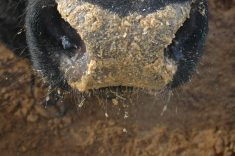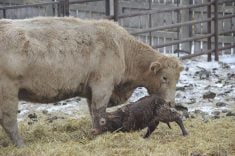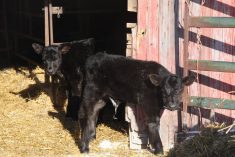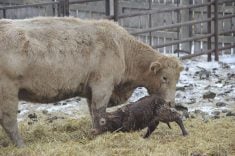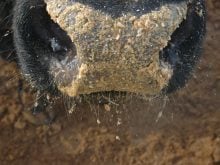Warm water helps thaw feet, ears and tail if indoors but not if calf is still outdoors because moisture will further cool it
Winter calving brings risk of frostbite and frozen ears or tails and it is also a risk for older calves if there isn’t adequate shelter.
Sick calves are even more vulnerable due to dehydration or poor circulation.
Dr. Ted Clark, a retired veterinarian and pathologist, has seen many cases of severe frostbite in his career.
“Stockmen need to recognize the signs of frostbite and be aware of possible frostbite issues,” he says.
“Sometimes this problem can be confused with an infectious arthritis because the calf is lame and sore after freezing the feet. The lameness is more noticeable on the front feet because the calf tends to stand up on tiptoes, with knees cocked forward. The pain isn’t quite as noticeable in hind feet, even though the hind feet will freeze just as easily as the fronts.”
Read Also
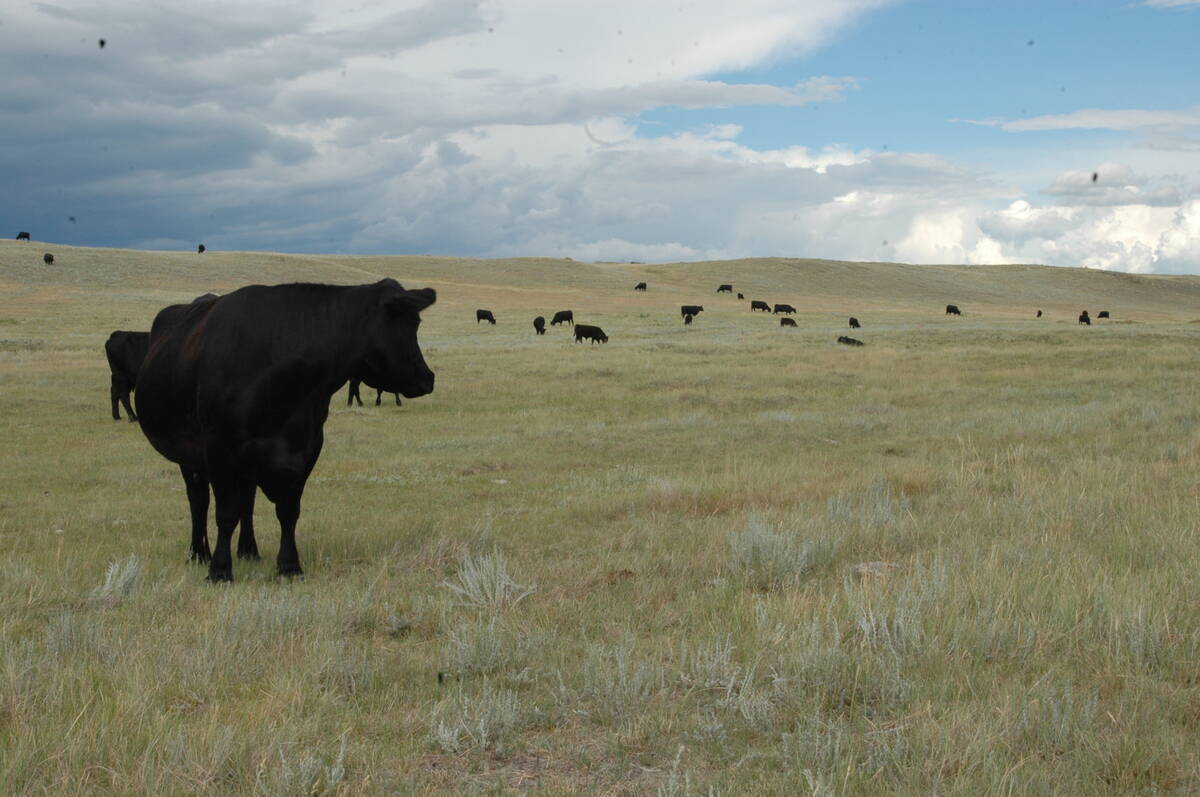
Saskatchewan Cattle Association struggles with lower marketings
This year’s change in the provincial checkoff has allowed the Saskatchewan Cattle Association to breathe a little easier when it comes to finances.
Frozen tissues are usually swollen, which is one way producers can confirm frostbite, he added.
“On the post-mortem table, when we open up the skin of these frostbite calves, we see edema mixed with blood. There is blood-tinged swelling under the skin.”
When body tissues get too cold, ice crystals form inside cell membranes and the cells rupture, killing the tissues. If confined to superficial skin layers, that skin will later slough away. Damage to deeper layers and blood vessels near the surface may lead to more extensive tissue death.
If legs, tail and ears are completely frozen, the calf may eventually lose them.
Don’t rub the cold extremities too vigorously if the skin is frozen, Clark advises, because it can further injure the damaged skin. If the tissue has not completely died, the frozen area may become swollen as blood returns.
Prevention is of course the best strategy. Ensure the cow accepts the calf and licks it dry, and also ensure the calf has suckled and obtained colostrum.
“The ambient temperature — how cold it is — will make a difference in how fast a calf might chill, along with how much bedding there is,” says Clark.
If a calf can snuggle into deep bedding, it is insulated and has lower risk of frostbite.
If a calf is really cold and needs to be warmed, first bring it into a warm, sheltered area. If indoors is an option, use warm water to help thaw feet, ears and tail. Use of warm water is not advised if the calf is still outdoors because moisture will further cool it.
Hot water bottles wrapped in towels, or electric blankets, can also help a calf that is chilled but not frozen.
If frostbite seems likely, the ears, tail or legs should be slowly warmed. Do not rub hard in attempts to stimulate circulation because that can damage skin that is already fragile.
“Don’t put the calf in a hot environment or try to get the circulation going too rapidly,” says Clark. “Recirculation damage can be just as bad as the freezing. If you warm the tissue too fast and all of a sudden those blood vessels dilate, this can cause more damage to the blood vessels. Use common sense and try to assess how severe and how extensive the freezing might be.
“Try to determine how you will get the calf to survive without losing his feet. This is also a humane issue. If you realize damage to the calf’s feet is severe, you need to make a decision. Will the calf survive if you try to restore circulation to those feet, or would the calf be better off euthanized?
“Too often I see people want to keep an animal alive too long, thinking of their own emotions rather than thinking about the welfare of that animal,” he says.
To determine whether there is still circulation and feeling in frostbitten feet, prick the coronary band with a pin or needle. If the calf responds and/or if there’s a bit of blood from the prick, there is still some sensation and the nerves and blood vessels are probably not irreparably damaged.
“With a pin, you could start at the coronary band and gradually work upward, to see if the calf feels any sensation,” Clark says.
“If the tail is frozen, one of the first things that will happen is the long hairs at the switch will fall out.”
If the ears are frozen, they will feel like stiff cardboard.
“The calf may lose part of the ear, but hopefully not the entire ear because that can also be an issue for future health — and likely the feet will be in similar condition,” says Clark.
Warm water on a washcloth can be gently applied to ears, tail and feet to slowly thaw them and they may be fine if the freezing was superficial.
“If they thaw out, however, and circulation is restored, those areas are very sensitive and will be painful for a while,” says Clark.
Calves with frostbitten ears, tail or feet should stay indoors, perhaps bedded in a barn with their mothers, until they are recovered and frostbitten tissues are no longer swollen and painful. Otherwise they are more vulnerable to cold stress and freezing again.



